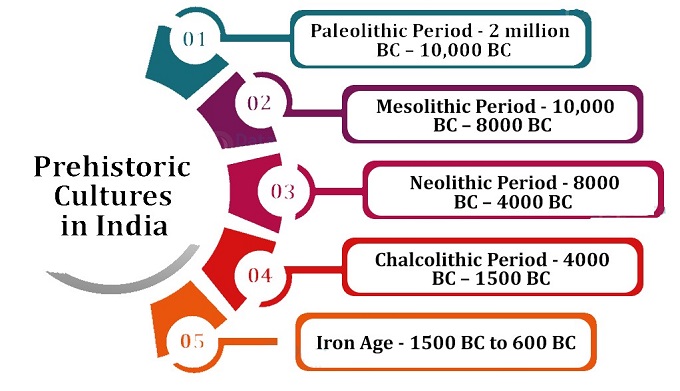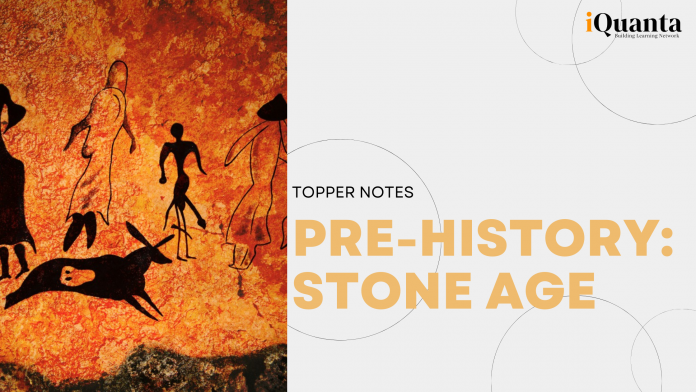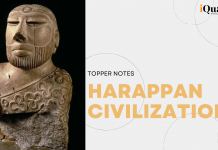Pre-Historic Period
Pre-history or stone age is the story of human civilization from hunting to farming, from nomadic to settled life. It was a period where humans were physically evolving and getting adjusted to changing climate with the help of better stone tools.

It is divided into the following periods:
- Palaeolithic
- Mesolithic
- Neolithic
Palaeolithic Period
- Period of the early stone age
- Heavy tools (found all over the Indian subcontinent: for example, Balen valley)
- The earliest stone tools in the Indian Subcontinent found at Attirampakkam were about 1.5 million years old (Read more)
Palaeolithic Period is divided into three periods: Lower, Mid, and Upper:
Climate: Ice age period (Plaestoscene)
Hunting & Gathering prominent as the vegetation was covered
- Lower Paleolithic Period
– Earliest tools
– Chopping tools
– Cleavers
– Hand tools - Mid Paleolithic Period
– Better and sharper tools
– Handaxe - Upper Paleolithic Period
– Sharper and smaller tools: bladed
– Rock art (more refined during the Mesolithic period)
Mesolithic Period
Climate: Holocene: Warmer period
More focus on hunting smaller animals: as the small animals were faster, usage of bow & arrow
- Lighter tools (microliths)
- Geometric tools (like in the shape of a triangle, rectangle, etc.)
Neolithic Period
Beginning of farming and settled life + pottery
- Sharper tools
- Polished tools
Most Important Features of Stone Age
- Rock Art: paintings are the earliest method to express thoughts, daily activities + flower and mineral colour was used.
– In India, the earliest painting traces to Upper Paleolithic and Mesolithic period (almost all over the country)
– The most important site is Bhimbetaka in MP (more than 600 caves): Important point to note: not all the paintings in the Bhimbetaka cave belong to the pre-historic period. Some of them belong to the Gupta Period, showing soldiers and horses.
– Important themes:
– Hunting, fishing, collection of honey and fruits
– Family scenes
– Earliest dancing scenes (ritual celebration)
– Most common: hunting scenes (of Deers, Blue Cow, Bison, Boars, Tigers, Elephant, Rhino) - 1st Crop: Barley (in Mehrgarh)
- Rice cultivation in Koldihar
- Neolithic culture in Kashmir: Pit dwellings + animals buried with humans + important sites: Burzahom, Gufkral and Kanispora.
- Hunting weapons: Bows & Arrows, Pointed Stick, Barbed Speare
- Stick line drawing was prominent; mostly red and white colours were used
- Why paintings were made on the wall? it is speculated that the painting was not for decoration but for some rituals.
Chalcolithic Period
Indus Valley Civilization (many other civilizations were present but they were not as advanced as IVC, they used inferior tools, no surplus food, therefore no trade)
Important features of IVC:
- Their script is indecipherable
- Largest area (compared with Mesopotamia, China, …)
- Urban Civilization: Well-planned towns, organised trade and commerce, the specialized art and craft
- Peaceful civilization: could not find war weapons
- Followed different religious traditions (no temple-like structures found)
- No trade with outside cultures (no coins found)
- They were familiar with all the metals except Iron
- They have mention of all animals except a horse (some say no true horse)


